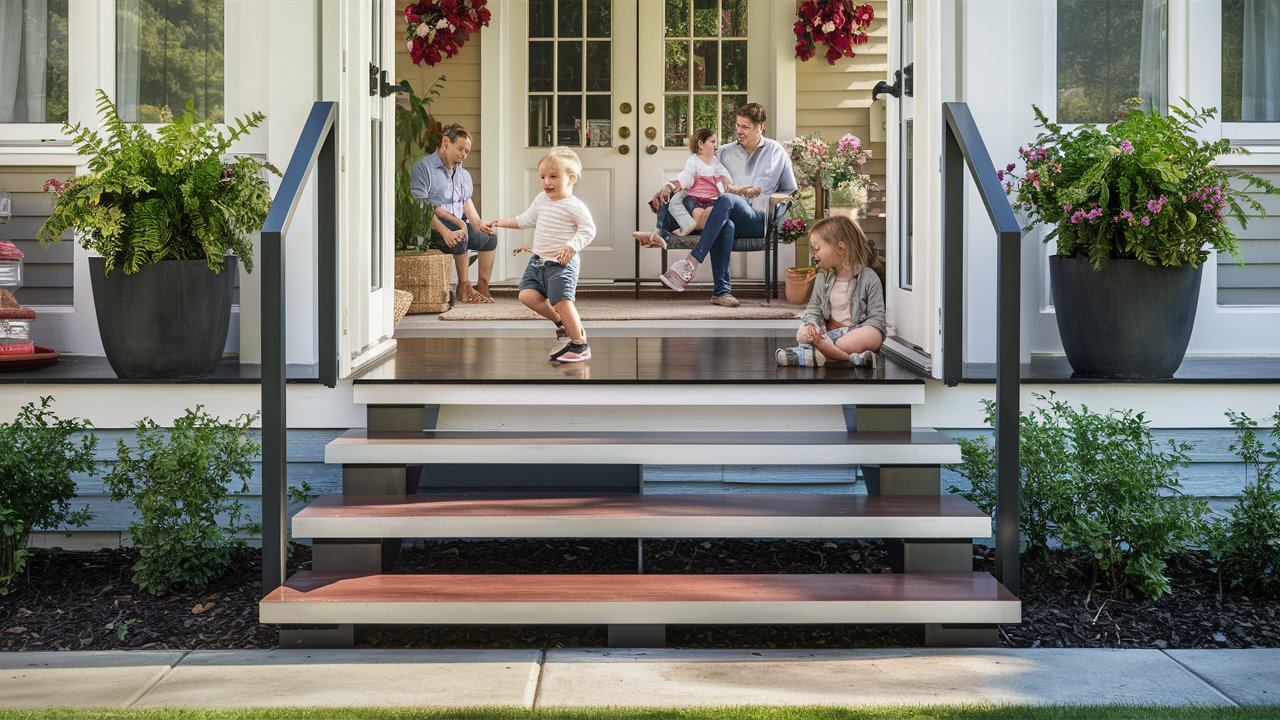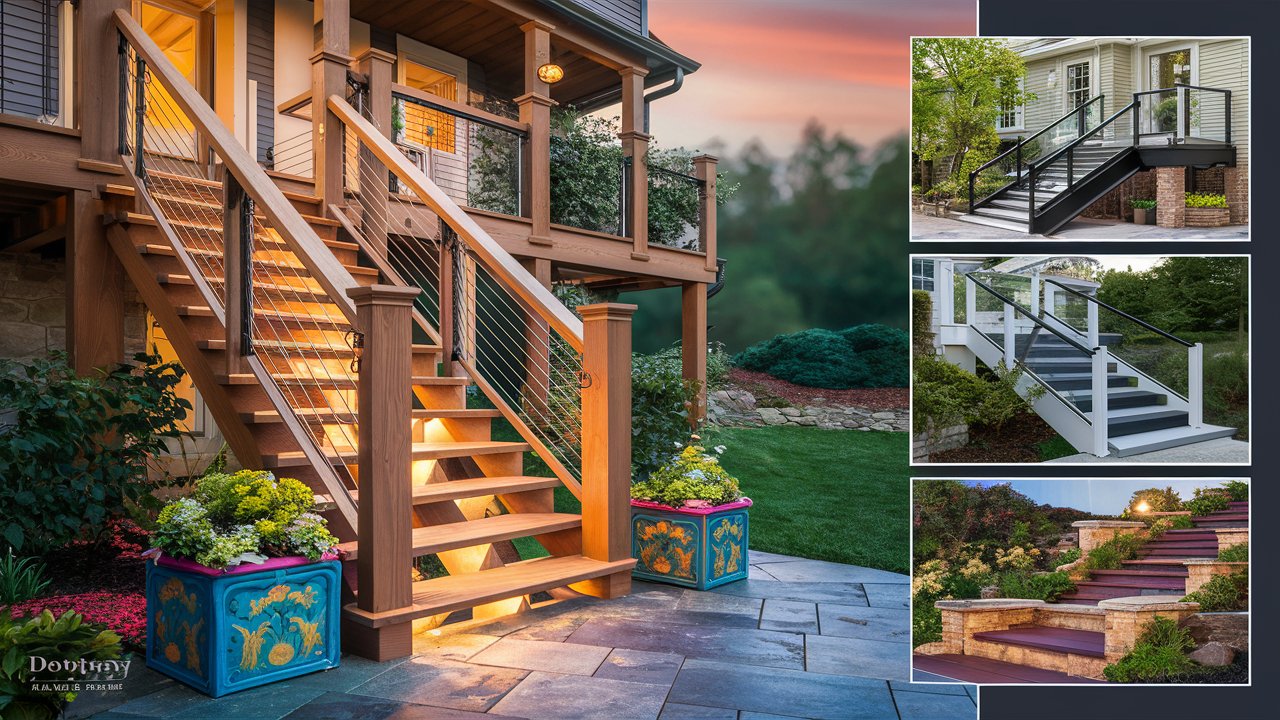Introduction
Dealing with areas in your yard where grass won’t grow can be a common frustration for homeowners. Whether it’s due to poor soil, heavy shade, or foot traffic, finding the right landscaping solutions can transform these difficult spots into beautiful focal points. By using strategies like mulching, incorporating shade-loving plants, and adding water features, you can turn bare patches into eye-catching spaces that enhance the overall appearance of your lawn.
In this guide, we’ll explore practical landscaping ideas for areas where grass won’t grow. From creating raised beds filled with vibrant ornamental grasses to installing low-maintenance ground cover, you’ll discover ways to make your yard lush and inviting while reducing the need for constant lawn care.
Key Takeaways
- Mulching provides a low-maintenance solution for areas where grass won’t grow, improving soil health and moisture retention.
- Shade-loving plants and ground cover can thrive in areas with poor sunlight, adding aesthetic value without needing much care.
- Water features, like fountains or waterfalls, can create focal points in your yard while enhancing moisture levels for surrounding plants.
- Raised beds allow you to control soil conditions, making it easier for plants to flourish in areas where grass struggles.
- Ornamental grasses are drought-tolerant and add texture and movement to a low-maintenance landscape.
- Combining these landscaping ideas can transform challenging areas into beautiful, easy-to-manage outdoor spaces.
How to Use Mulch in Areas Where Grass Won’t Grow

Mulch is an excellent solution for areas where grass won’t grow, especially in locations with poor soil or heavy shade. Homeowners can use mulch to maintain soil moisture levels and suppress weed growth, reducing the need for constant lawn care. Mulching helps areas where grass struggles by providing a neat, polished look while improving soil health over time. Inorganic mulch like wood chips or river rock creates a low-maintenance ground cover that’s perfect for areas that don’t support grass growth. Mulching can also add beauty and texture to the landscape, turning bare spots into focal points for your garden. Considering its easy upkeep, mulch can be a lifeline for difficult landscaping areas.
Best Types of Mulch for Grass-Free Zones
When selecting mulch for areas where grass won’t grow, choosing the right type is key to improving the look and health of your landscape. Inorganic mulch, such as river rocks or pea gravel, adds a polished look to your yard while requiring minimal maintenance. Organic mulches like wood chips or bark are great for enhancing soil moisture and adding nutrients to the ground. Both options help prevent weeds and reduce the need for constant lawn care, making them excellent additions to areas struggling to support grass growth.
How Mulching Improves Soil Health
One of the biggest benefits of mulch is its ability to improve soil health over time. By helping to retain moisture, mulch prevents soil erosion and keeps essential nutrients locked in the ground. Mulching also creates an ideal environment for shade-tolerant plants to thrive, especially in areas with poor soil conditions. Whether you’re using organic or inorganic mulch, it reduces the need for fertilization and helps establish a low-maintenance landscape that can flourish even in difficult areas.
Creative Mulch Solutions for Areas Where Grass Won’t Grow
1. Organic Mulch for Moisture Retention
Organic mulch, such as bark or wood chips, is perfect for improving soil moisture in areas where grass won’t grow. It helps the soil retain essential nutrients and prevents erosion, making it an ideal option for shady or dry areas.
2. Inorganic Mulch for a Polished Look
Inorganic mulch options like river rocks or pea gravel offer a sleek, low-maintenance solution for bare spots. These materials not only add visual interest but also reduce the need for regular lawn care, keeping your yard neat and tidy.
3. Mulch with Plants for a Layered Effect
Using mulch alongside shade-tolerant plants like ferns or creeping thyme creates a beautiful, layered landscape. This approach adds texture to your yard while allowing plants to thrive, even in difficult soil conditions.
Choosing Shade-Loving Plants and Ground Cover for Difficult Areas

In shady areas where grass won’t grow, shade-loving plants and ground cover can thrive and add aesthetic value to your landscape. Options like moss or creeping thyme can easily cover bare spots, offering a lush and vibrant look. These plants grow well in areas where there’s a lack of sunlight, creating a beautiful alternative to grass. Adding low-maintenance shrubs or drought-resistant plants to your yard will improve its appearance, reducing the need for frequent fertilization. This approach can transform shaded spaces, creating an outdoor area that feels lush and inviting without the constant hassle of lawn care.
Top Shade-Loving Plants for Bare Spots
Finding the right plants for shaded areas where grass won’t grow is crucial for creating a lush and vibrant outdoor space. Plants like hostas, ferns, and Japanese forest grass thrive in low-light conditions and require minimal care. These plants add beauty and texture to your yard, turning bare spots into thriving greenery. Shade-loving ground covers like creeping thyme or moss also create a soft, carpet-like appearance that can withstand shady environments and heavy foot traffic.
How Ground Cover Can Replace Grass in Shady Areas
Ground covers are an excellent alternative to grass in areas with poor sunlight or poor soil. Unlike grass, these low-maintenance plants don’t require mowing or heavy watering, making them ideal for areas with limited light. Ground covers such as creeping thyme, Irish moss, and vinca minor can grow densely, preventing weeds from taking over and reducing the need for constant fertilization. By using ground cover, homeowners can transform shaded areas into lush, easy-to-maintain spaces.
Case Study: Transforming a Shady Backyard with Shade-Loving Plants and Ground Cover
A homeowner in New York had a backyard where grass wouldn’t grow, mainly because of the heavy shade from nearby trees. Instead of constantly battling reseeding or spending hours on lawn care, they took a different approach. They worked with a landscaper to redesign their yard using shade-loving plants and ground cover. The plants they chose—ferns, hostas, and Japanese forest grass—flourished in the shady spots and didn’t need much attention.
On top of that, they added creeping thyme as a ground cover. It spread beautifully, covering up the bare areas where grass wouldn’t grow. This simple solution turned their backyard into a green oasis, without the need for constant fertilization or watering. In the end, the yard looked stunning and required minimal effort to maintain.
Adding Water Features to Front Yard Landscaping Ideas Where Grass Struggles

Water features such as a small pondless fountain or decorative waterfall can add visual interest to front yard areas where grass struggles to grow. Incorporating these elements not only creates a stunning focal point but also helps improve the moisture levels in the surrounding areas, making it easier for plants to thrive. By focusing on water features in areas where grass won’t grow, homeowners can divert attention from patchy spots and instead highlight the beauty of their landscape design. Whether it’s a fountain or a natural-looking stream, water features bring a calming effect to any outdoor space, elevating the aesthetic appeal.
Small Water Features That Add Big Impact
Adding small water features like a fountain or pondless waterfall can dramatically enhance the look of areas where grass won’t grow. These features create a calming atmosphere, attract wildlife, and add aesthetic value to the yard. Even in spaces where grass is struggling, a water feature becomes a focal point that draws attention away from bare spots and makes the overall landscape feel more cohesive and inviting. They’re also easy to maintain, making them a great option for any homeowner.
Creating a Balanced Landscape with Water and Plants
Incorporating both water features and plant life into your landscape can help balance the aesthetic appeal of your yard. Combining drought-resistant plants, such as ornamental grasses, with a small fountain or pond creates a visually striking contrast between water and greenery. These landscaping elements not only improve the appearance of areas where grass won’t grow but also promote better moisture levels, helping plants thrive in surrounding areas.
“Water is the driving force of all nature.” — Leonardo da Vinci.
Incorporating Raised Beds and Ornamental Grasses for a Low-Maintenance Landscape

For homeowners dealing with areas where grass won’t grow, raised beds and ornamental grasses are a smart solution for creating a low-maintenance landscape. Raised beds allow you to improve soil health by controlling the nutrients and moisture levels, making it easier for plants to flourish. Ornamental grasses, like Japanese forest grass or Irish moss, add texture and movement to the yard while requiring minimal upkeep. These landscaping ideas not only enhance curb appeal but also reduce the need for mowing or frequent watering, making them ideal for homeowners looking for a beautiful lawn with less effort.
Benefits of Raised Beds in Areas with Poor Soil
Raised beds are a perfect solution for areas with poor soil where grass won’t grow. By elevating the plants, you can control the soil composition, ensuring that it has the right nutrients and moisture levels for plants to thrive. Raised beds also improve drainage, making it easier to grow a variety of plants even in otherwise challenging areas. This approach not only enhances curb appeal but also offers a long-lasting and low-maintenance solution for homeowners.
Why Ornamental Grasses Are Perfect for Low-Maintenance Landscaping
Ornamental grasses, like Japanese forest grass and pampas grass, are excellent additions to low-maintenance landscapes. These grasses are drought-tolerant and thrive in areas with poor soil, providing texture and movement to the yard without requiring much upkeep. Ornamental grasses can fill bare spots and create a polished look in areas where grass won’t grow, adding both beauty and functionality to the landscape.
Conclusion
Transforming areas where grass won’t grow into beautiful, low-maintenance landscapes is easier than you might think. By utilizing techniques like mulching, incorporating shade-loving plants, and adding water features, you can create a thriving outdoor space that requires minimal upkeep. Raised beds and ornamental grasses offer further options for improving soil health and adding texture to your yard, giving it a polished look that enhances curb appeal.
Whether you’re dealing with poor soil, heavy shade, or high foot traffic, these landscaping solutions ensure that every corner of your yard can be transformed into an attractive and functional area. With the right approach, even the most challenging spots can become highlights in your landscape design.

![CLOUDY BAY [6 Pack] 6inch Smart WiFi LED Recessed Lights,RGBCW Color Changing Recessed Lighting,Compatible with Alexa and Google Home Assistant,No Hub Required,15W 2700K-6500K,CRI90+ Wet Location](https://m.media-amazon.com/images/I/41H5465vC2L.jpg)




